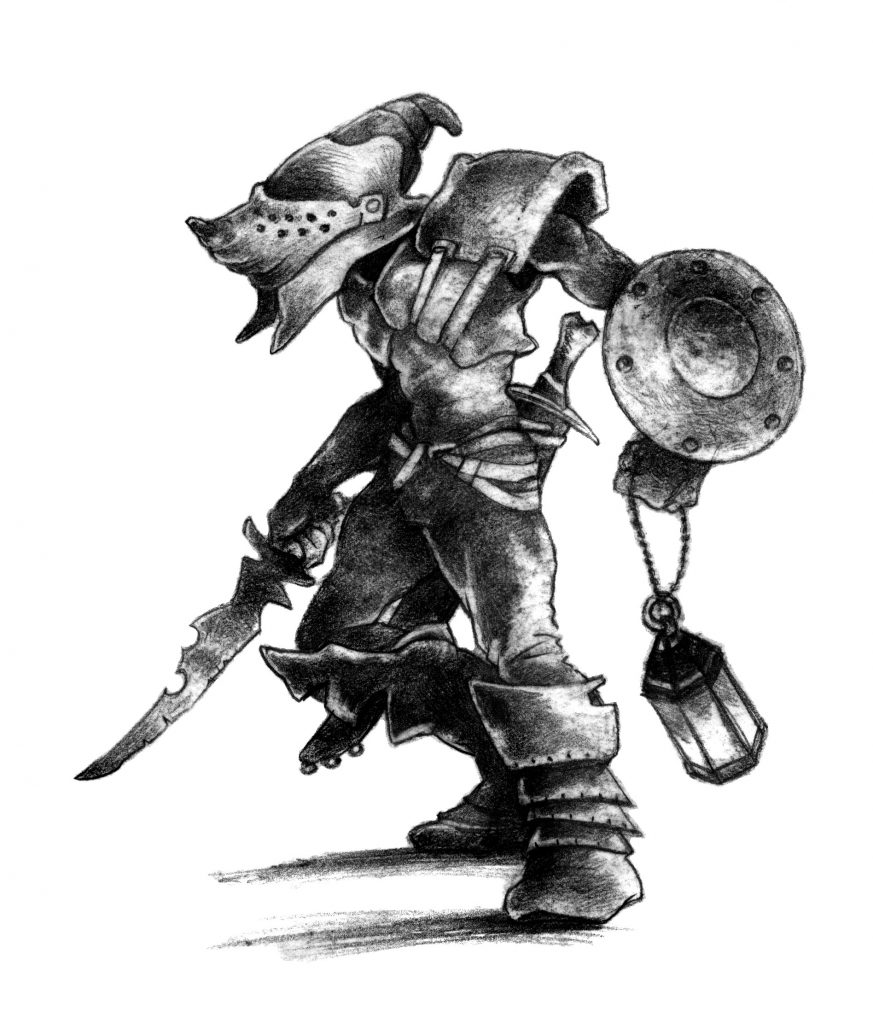
Creating narrative in Tabletop RPGs is a different ball game compared to novels and scripts. While we can create scenes and offer pieces of information to the players, the players still remain agents of chaos and change. But that’s part of the fun; why would we spend all of our time planning for the next session if we weren’t prepared to surprise or be surprised? In Mythical Monsters, I describe 10 ways a gamemaster can place important clues and information before the players.
Present a Scene
Setting the scene and giving the players an area to investigate will allow them to use their relevant skills or abilities to pick up on clues, objects, or important details to the ongoing narrative. Perhaps they find the aftermath of a gruesome battle scene caused by the villain of the tale. Or perhaps the alchemy room of their friendly neighborhood wizard is actually hiding details of the wizard’s true nature in plain sight!
Dialogue
Having the characters either receive dialogue themselves or overhear a group is another way of providing them some clues concerning the plot. If the villain’s deeds are sending ripples through the surrounding area, have the local townsfolk pick up on it and talk about it to each other over a pint of ale. Or better yet, maybe one lone local at the bar is dying to talk about the latest rumors and gossip with the first player-character they see.
Background Investigations
Players that decide to follow-up on one clue may find an investigation worthy of their time and effort. Doing so can help them uncover witnesses, find suspects, track down creatures, or discover additional clues. This is also fertile ground for the Storyteller to provide lies, misunderstandings, and misdirections to further add to the mystery of what’s going on.
Making Observations
In this case, the players can observe something that helps them figure out what happened. Maybe they spot a symbol that ends up being a sigil or guild logo. They might find manure on the ground to hint that someone came from a stable, or they could notice that footprints indicate a large or small shoe size.
Interview Witnesses
If an incident occurred that contained clues or subtle details about a villain’s scheme, having the players talk to anyone who might have been nearby is another great way to present information before them. Perhaps they missed the culprit themselves but heard the sounds of breaking glass or an eerie howl.
Confront Suspicious Bystanders
A member of the party notices someone nearby behaving in a suspicious manner. It might be a mysterious figure lurking near the scene of a crime or someone who lets slip something they aren’t supposed to know. Perhaps the party discovers a thief that is selling valuable items taken from a victim’s home.
Follow Suspects
Instead of confronting a suspicious person outright, the party might decide to use stealth and tail them. Now the party can monitor where the suspect goes, what they do, and who they meet with. Each opportunity is rife with potential for discovery and giving them more information to work with.
Seek out an Expert
The party may choose to seek out an expert on the subject if they’re unable to parse the clues they have found. This is good because the heroes are seeking out the assistance from another. This also functions as an interesting avenue for conflict as the expert may not be immediately available or could have ulterior motives for providing the party with misinformation. Perhaps the villain has threatened them or their kin or has paid them out to shut up.
Search Pockets
The bodies of fallen goons or minions is another excellent way of dropping clues. Notes from the villain stuffed away into a pocket or a mysterious brand sewn into the inside of a character’s jacket might reveal an important detail to the players. Or perhaps the corpse of a stranger bears something in the way of revealing their killer. Of course searching pockets isn’t solely limited to dead bodies; if a character has enough finesse, they could make a quick grab and flee before a minion catches on.
Eavesdrop on Minions
Perhaps the party is made aware of a group of minions nearby who might possess some intelligence on the villain’s current actions. Maybe a minion has been secretly watching the hero, or maybe minions came to kidnap the hero, but the hero managed to hide. When the hero is nearby but the minions don’t know it, they can have a conversation between themselves.